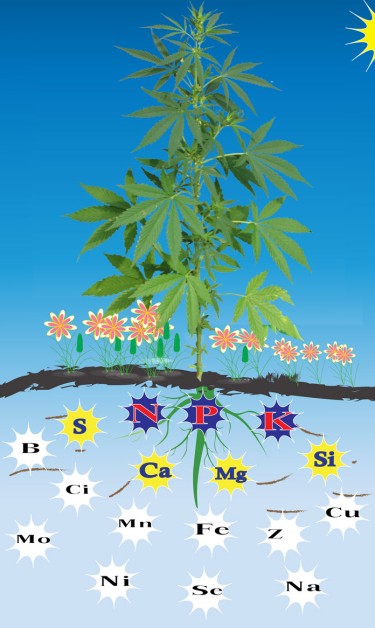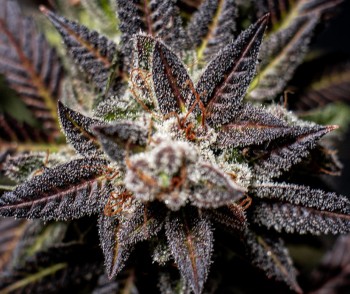
The task of feeding cannabis plants is seemingly an easy one. Even with that, one of the most common problems novice growers face is a poor feeding regimen. In addition, you might find it surprising to hear that rather than underfeeding, overfeeding of these plants occurs more frequently.
Notwithstanding, knowledge is power. Comprehending the needed NPK ratios for various phases of a cannabis plant's life cycle will provide you with the tools to effectively manage the health and yield of your crop. Nutrients are an essential factor in cannabis planting. The triad of macronutrients, Nitrogen (N), Phosphorus (P), and Potassium (K), are the stimulants used by most other plants and marijuana to develop.
The base nutrients in NPK cannot be applied to the soil in the same ratio for the total cannabis life cycle. Contingent on the particular processes the plant is giving energy to, the concentrations needed will vary.
Application Ratios of Cannabis NPK Fertilizer Based on Stage of Growth
There is more to fertilization than just inputting the nutrients into the substrate and observing your plant's growth. For ideal results, various phases in a cannabis plant's life cycle need a varying NPK ratio.
Seedling Stage
Even though this stage comes with many difficulties, fertilization is not one of them. Any healthy soil should contain all the nutrients a seedling needs to grow well, and applying additional nutrients to it through fertilizers is more likely to send the seedling to an early grave than assist it. Don't get too excited at this point; it needs to be mostly left alone!
What to Do in The Vegetative Stage
Upon entering the vegetative stage, the plant will begin to crave nutrients. During this vegetative state, the cannabis plant will require an NPK ratio of 3:1:1. That, however, does not necessarily mean you have to feed the plant with a fertilizer that has that ratio.
Many soils come rich with nitrogen, enough to feed the first four weeks of vegetative growth, so you will want to reconfigure your nutrient solution based on the current NPK ratio of the substrate. A minute nutrient deficiency is a lot more preferable to too much. As a result, you should always err on the side of caution. If you have healthy soil, a 1:1:1 ratio fertilizer will likely be enough. Simply expressed, this indicates that each macronutrient is present in equal amounts.
Flowering Stage
As cannabis plants progress from the vegetative to the blooming stages, their macronutrient requirements shift in the opposite direction. It would help if you switched to bloom base nutrients and manipulated the NPK ratio.For early to mid-bloom, a highly effective NPK ratio will be 1:3:2, followed by 0:3:3 for the late flowering stage. Then a last flush of light and/or pure water flushing solution at the end of the last week for flavor. After that, harvesting begins.
Your buds will grow in quantity and size according to P, and K (Phosphorus and potassium) commands. For this reason, sealing off nitrogen levels while at the same time increasing P and K is the main objective for growers. Excessive addition of nitrogen late in bloom spoils the sinsemilla. The taste of buds will be harsh, and they just won't smoke as smoothly as a completely flushed stash. Skip the nitrogen entirely for the final 20–30 days.
Using NPK Fertilizer to Grow Cannabis
As said, soil growers do not need to add fertilizer during the seedling stage. Usually, administering beneficial microorganisms and enzymes to the soil is enough. These will assist in root development and make nutrients readily available in the soil. Some strains, more specifically the Indica varieties, tend to react better to higher doses of fertilizer; a higher level of Sativa presence relates to lower nutrient requirements. The middle ground is occupied by hybrids, with some tending towards a preference for heavier or lighter doses.
Direct contact with grow room experience with a specific strain of cannabis is the only way to know for a fact. Administering complete strength doses of cannabis nutrients, that is, heavy feeding, as well as timely amounts of bloom boosters, can perform miraculously for yields, but this is only if you possess a strain with a proven relationship to a serious feeding regime. Instead, you can try to follow a feeding schedule to dose nutrients at just the right amount.
Anyone who has ever attempted to juice bunk marijuana with boosters and potions can inform you that it is a waste of your time and funds. Genetics will be the primary determinant of how strong you are and how much of a stash you carry to harvest. Regardless of whether you do everything perfectly, you can and will most likely reach the point of no further progress as determined by genetics. Build up your feed slowly and steadily, and monitor the behavior of your plant every step of the way. Whether you like it or not, there are no shortcuts to this one.
Identifying The Problems With The NPK Ratio of Cannabis
If you grow a lot, you're bound to encounter some nutrient-related complications at some point. Early detection is critical for rectifying any issues and guaranteeing a good yield. A point for novice growers is that, though it can be tempting to give your plants a lot of feed, thinking they will grow more, this is possibly the first cause of problems for new growers.
Bottom Line
Less is more in regards to feeding your cannabis plants; less is more. As you have read, difficulties related to underfeeding are treated with ease and pose a minor threat to your plant's health unless it has been completely deprived for a long time. On the other hand, overfeeding causes a slew of more difficult problems to resolve and are more likely to harm your plants.
Start slow and low, and also learn to study your plants to determine what they might need. Doing this will not only help you give them all that they need, but you will also become a more skilled cultivator, and growing your cannabis will become a lot more pleasant to do.






